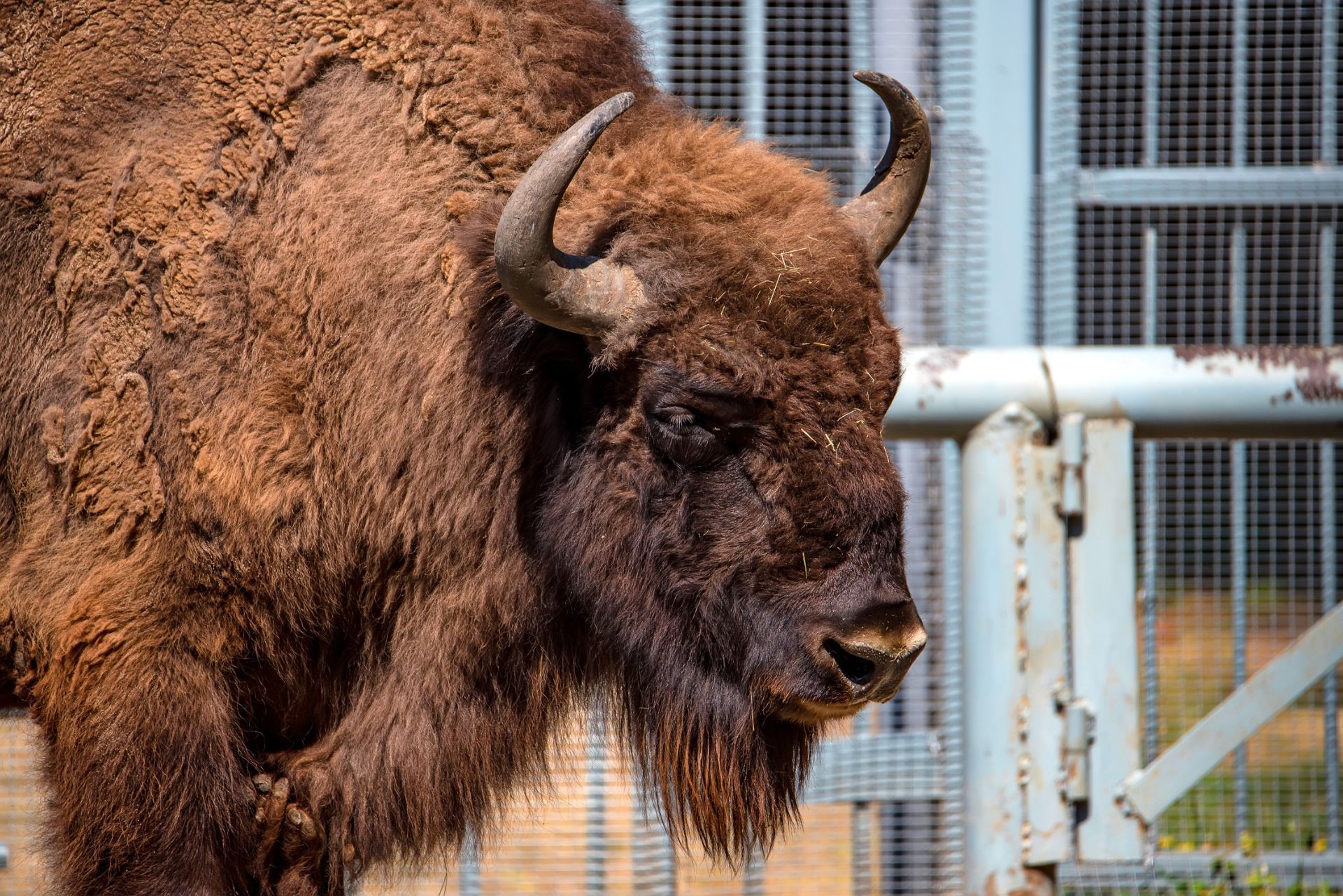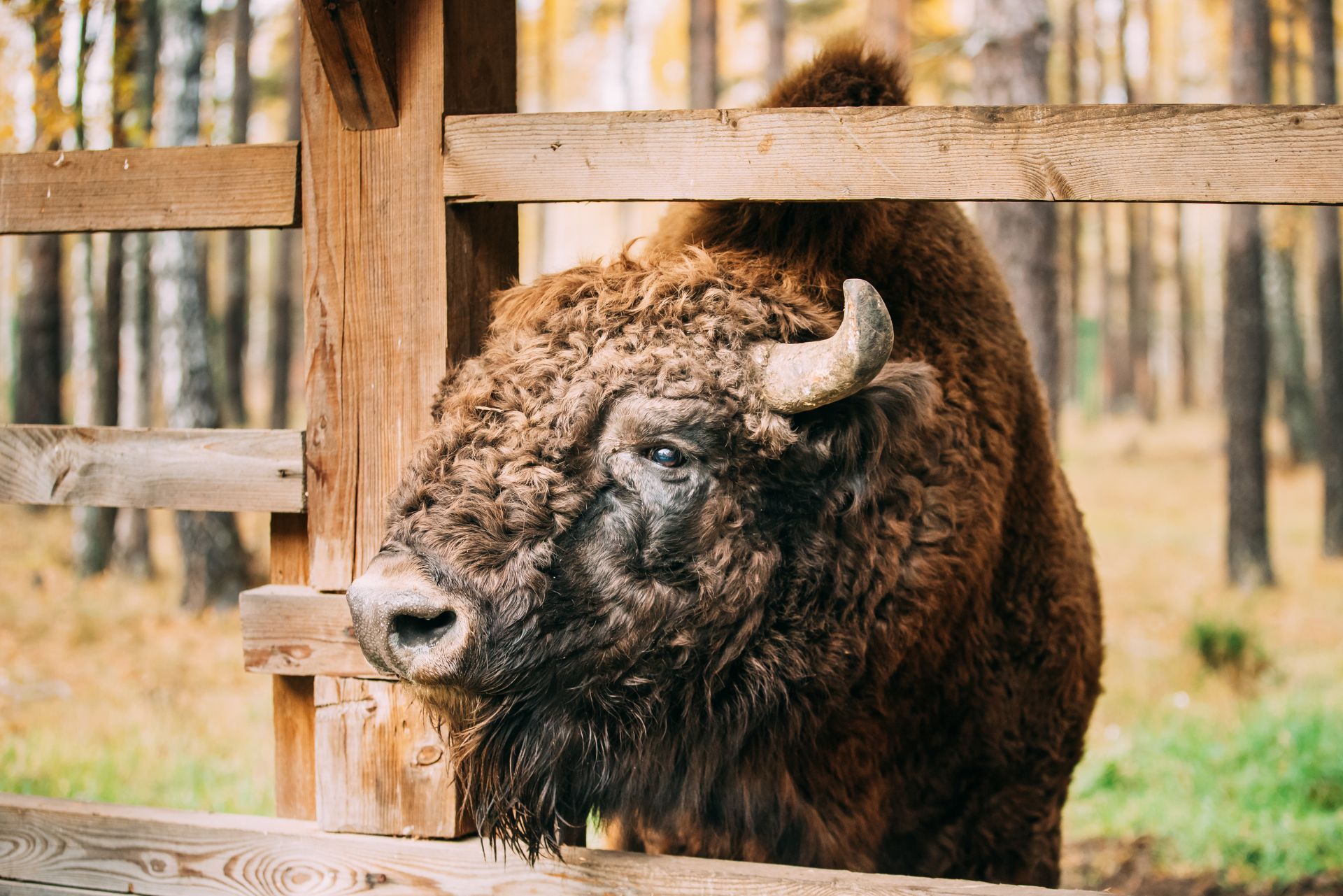
Top 3 Recommended Policies

Owning and operating a bison ranch is a unique and rewarding venture, combining agricultural tradition with the stewardship of one of North America’s most iconic wildlife species. However, with the distinct challenges that come with managing exotic animals like bison, securing the right insurance coverage is crucial. Bison ranch insurance isn’t just about protecting your land and livestock; it’s about safeguarding your investment, your livelihood, and your peace of mind.
This comprehensive guide explores everything you need to know about bison exotic animal ranch insurance—from understanding the risks involved to navigating policy options and coverage specifics. Whether you’re a seasoned rancher or considering entering the bison business, this article will equip you with the knowledge to make informed insurance decisions tailored to your ranch’s unique needs.
Understanding the Unique Risks of Bison Ranching
Bison ranching differs significantly from traditional cattle farming due to the animals’ size, behavior, and legal status as exotic or wild animals in many jurisdictions. These differences translate into distinct risks that standard farm insurance policies often do not cover.
Behavioral and Physical Risks
Bison are powerful animals, often weighing up to 2,000 pounds and capable of sudden, unpredictable movements. Unlike domesticated cattle, bison can be more aggressive and less accustomed to human interaction, increasing the risk of injury to handlers, visitors, or neighboring properties. This behavioral aspect necessitates specialized liability coverage that addresses injuries or damages caused by the animals.
Additionally, their strength and size mean that fencing, corrals, and other infrastructure must be robust and well-maintained. Damage to property caused by bison can be costly, and insurance policies need to reflect these potential liabilities. Ranchers often invest in reinforced fencing and secure handling facilities, which can be a significant upfront cost. Regular inspections and maintenance are essential to ensure that these structures can withstand the bison's strength, as even a small breach can lead to significant financial losses and safety hazards.
Environmental and Natural Risks
Bison ranches often span large tracts of land, sometimes in remote or rural areas. This exposes them to environmental risks such as wildfires, floods, severe storms, and droughts. Given the increasing frequency of extreme weather events due to climate change, these risks have grown more significant in recent years.
Moreover, bison are susceptible to diseases such as brucellosis and bovine tuberculosis, which can lead to substantial financial losses if outbreaks occur. Biosecurity measures are essential, but insurance that covers disease-related losses is equally important for risk mitigation. Ranchers must also be vigilant about the health of their herds, implementing regular veterinary checks and vaccinations to prevent disease spread. The costs associated with these health management practices can add up, making comprehensive insurance coverage a critical component of a successful bison ranching operation.
Regulatory and Legal Risks
Bison are often classified as exotic or wild animals, subjecting ranchers to specific regulations regarding their care, transport, and sale. Compliance with state and federal laws is mandatory, and failure to adhere can result in fines or legal action. Insurance policies that include coverage for legal defense costs and regulatory fines can provide critical support in such scenarios.
Furthermore, ranchers must navigate a complex web of local zoning laws and land use regulations that can affect their operations. These legal frameworks can dictate everything from herd size to the types of facilities allowed on the property. Engaging with local agricultural boards and staying informed about changes in legislation is crucial for ranchers to avoid potential pitfalls. Additionally, as consumer interest in bison meat grows, ranchers must also be prepared for the scrutiny that comes with selling a product that is often marketed as a healthier alternative to beef, which can lead to increased regulatory oversight and the need for compliance with food safety standards.
Types of Insurance Coverage for Bison Ranches
Given the complexity of bison ranching, a comprehensive insurance plan typically involves multiple types of coverage tailored to the unique risks of the operation.
Livestock Insurance
Livestock insurance is a cornerstone of bison ranch coverage. This type of policy protects against the loss of animals due to accidents, illness, theft, or natural disasters. Since bison are valuable assets—often worth thousands of dollars each—this coverage is essential to protect your financial investment.
Some policies also cover losses due to quarantine or government-mandated destruction in the event of disease outbreaks, which can be a critical safeguard given the susceptibility of bison to certain illnesses. Additionally, ranchers may want to consider adding coverage for breeding stock, as the genetic quality of bison can significantly impact the overall profitability of the ranch. This specialized coverage can help ensure that valuable breeding animals are protected, allowing ranchers to maintain their genetic lines and continue their breeding programs even in the face of unexpected losses.
Property and Equipment Insurance
Property insurance covers physical assets such as barns, fencing, feed storage, and ranch equipment. Because bison can cause damage to fencing and other structures, it’s important to ensure that your property coverage includes damage caused by your own animals, which is not always standard in farm insurance policies.
Equipment insurance protects costly machinery like tractors, feeders, and transport vehicles essential for daily operations. Given the scale of bison ranching, this coverage helps prevent operational disruptions due to equipment failure or damage. Furthermore, ranchers should also consider coverage for specialized equipment, such as handling systems designed for bison, which can be more expensive and require additional protection. This ensures that all aspects of the ranching operation are safeguarded, allowing for smooth and efficient management of the herd.
Liability Insurance
Liability insurance is critical for protecting ranchers against claims arising from injuries or damages caused by their bison. This includes coverage for visitors, employees, and neighboring properties. Because bison are large and potentially dangerous animals, liability claims can be significant, making this coverage indispensable.
Some policies also offer coverage for professional liability if you provide services such as guided tours, educational programs, or breeding consultancy. In addition, ranchers may want to explore options for coverage that includes legal defense costs, which can be substantial in the event of a lawsuit. This added layer of protection can provide peace of mind, allowing ranchers to focus on their operations without the constant worry of potential legal repercussions from unforeseen incidents.
Business Interruption Insurance
Unexpected events such as natural disasters or disease outbreaks can halt operations, leading to significant financial losses. Business interruption insurance compensates for lost income during these periods, helping ranchers maintain financial stability while recovering from setbacks.
Moreover, this type of insurance can also cover ongoing expenses such as payroll and utilities, ensuring that the ranch can continue to operate smoothly even during challenging times. Ranchers may also want to consider additional coverage for specific risks associated with bison ranching, such as extreme weather events that could lead to prolonged interruptions. This proactive approach can help ensure that the ranch is well-prepared for any eventuality, allowing for a quicker recovery and a return to normal operations.

Factors Affecting Bison Ranch Insurance Premiums
Insurance premiums for bison ranches can vary widely based on several factors. Understanding these can help ranchers optimize their coverage while managing costs.
Herd Size and Valuation
The number of bison and their market value directly influence the cost of livestock insurance. Larger herds or animals with higher market value increase the insurer’s risk exposure, resulting in higher premiums. Additionally, the breed and age of the bison can also play a role; for instance, premium rates may differ for breeding stock compared to feeder animals, as breeding stock typically holds a higher value and is subject to different market dynamics. Ranchers should regularly assess the valuation of their herd to ensure they are adequately covered without over-insuring, which can lead to unnecessary costs.
Location and Environmental Risks
Ranches located in areas prone to wildfires, floods, or severe weather may face higher premiums due to increased risk. Proximity to urban areas or public lands can also affect liability risk and insurance costs. Furthermore, the geographical characteristics of the land, such as its elevation and drainage capabilities, can influence susceptibility to natural disasters. Ranchers in regions with a history of specific environmental challenges may benefit from tailored insurance products that address these unique risks, allowing them to secure more comprehensive coverage at a reasonable rate.
Safety and Biosecurity Measures
Implementing robust safety protocols, such as secure fencing, employee training, and biosecurity practices, can reduce the likelihood of accidents or disease outbreaks. Insurers often offer premium discounts or more favorable terms to ranchers who demonstrate proactive risk management. Additionally, keeping detailed records of health management practices, vaccination schedules, and biosecurity audits can further support a rancher's case for lower premiums. Investing in technology, such as surveillance systems or health monitoring devices, not only enhances safety but can also serve as a testament to the rancher's commitment to risk mitigation, potentially leading to additional savings on insurance costs.
Claims History
A ranch’s history of insurance claims impacts premium rates. Frequent or severe claims can lead to increased premiums or difficulty obtaining coverage. Maintaining a clean claims record is beneficial for long-term insurance affordability. Ranchers should also be aware that the nature of past claims can influence future premiums; for example, claims related to disease outbreaks may prompt insurers to scrutinize biosecurity measures more closely. As such, ranchers are encouraged to engage in regular risk assessments and implement preventative strategies to minimize the likelihood of future claims, thereby fostering a more favorable relationship with their insurance providers.
How to Choose the Right Insurance Provider
Selecting an insurance provider experienced in exotic animal ranching is essential. Not all insurers understand the nuances of bison ranch operations, which can lead to gaps in coverage or unexpected exclusions. The unique challenges faced by ranchers, such as environmental factors, animal health issues, and market fluctuations, require a provider who can navigate these complexities effectively.
Specialized Expertise
Look for insurers or brokers specializing in agricultural or exotic animal insurance. Their expertise ensures policies are tailored to your ranch’s specific risks and needs. These specialists are often well-versed in the latest industry trends and regulations, which can provide invaluable insights into best practices for risk management. Additionally, they may have established relationships with veterinarians and animal health experts, further enhancing the support they can offer to ranchers.
Comprehensive Coverage Options
Choose providers offering customizable policies that combine livestock, property, liability, and business interruption coverage. Bundling policies can often result in cost savings and simplified management. Furthermore, consider additional options such as coverage for transportation of animals, which can be crucial if you participate in shows or sales. This comprehensive approach not only protects your assets but also ensures that you are prepared for unforeseen circumstances that could impact your business operations.
Claims Support and Customer Service
Efficient claims processing and responsive customer service are critical during stressful events such as animal loss or property damage. Seek providers with strong reputations for support and transparency. A dedicated claims adjuster who understands the intricacies of your operation can make a significant difference in the claims experience. Additionally, consider the availability of 24/7 support; having access to assistance during emergencies can provide peace of mind and expedite the recovery process.
Competitive Pricing and Flexibility
While cost shouldn’t be the sole factor, competitive premiums and flexible payment options can ease financial burdens. Request multiple quotes and compare coverage details carefully. It’s also wise to inquire about discounts for risk management practices, such as implementing safety protocols or maintaining a healthy herd. By demonstrating your commitment to reducing risk, you may not only lower your premiums but also foster a long-term partnership with your insurer that benefits both parties.
Case Studies: Real-Life Examples of Bison Ranch Insurance in Action
Examining real-world scenarios highlights the importance of comprehensive insurance coverage for bison ranches.
Case Study 1: Disease Outbreak and Livestock Insurance
A Montana bison ranch experienced a brucellosis outbreak, leading to quarantine and culling of affected animals. Thanks to their livestock insurance policy, the ranch received compensation for the lost animals and related expenses, enabling them to recover financially and restock their herd.
Case Study 2: Liability Claim from Visitor Injury
In South Dakota, a visitor was injured after unexpectedly approaching a bison during a ranch tour. The ranch’s liability insurance covered medical costs and legal fees, protecting the ranch from significant financial loss and reputational damage.
Case Study 3: Wildfire Damage and Business Interruption
A ranch in Colorado suffered extensive property damage due to a wildfire, destroying fences and feed supplies. Their property and business interruption insurance provided funds to rebuild infrastructure and cover lost revenue during the recovery period.
Tips for Managing Risks and Lowering Insurance Costs
While insurance is vital, proactive risk management can reduce the likelihood of incidents and help control premiums.
Invest in Secure Infrastructure
Strong, well-maintained fencing and corrals reduce escape risks and injuries. Regular inspections and timely repairs are essential.
Implement Safety Training Programs
Educate employees and visitors on bison behavior and safety protocols to minimize accidents. Clear signage and supervised tours can further enhance safety.
Maintain Rigorous Biosecurity
Preventing disease introduction through quarantine procedures, vaccination programs, and controlled access protects herd health and reduces insurance claims.
Keep Detailed Records
Document animal inventories, health records, maintenance logs, and incident reports. Accurate records support insurance claims and demonstrate responsible management.

Conclusion: Securing Your Bison Ranch’s Future
Bison exotic animal ranch insurance is a specialized but essential component of responsible ranch management. By understanding the unique risks, exploring comprehensive coverage options, and partnering with knowledgeable insurers, ranchers can protect their animals, property, and business operations against a wide range of potential challenges.
As the bison industry continues to grow—driven by demand for sustainable meat, conservation efforts, and agritourism—having the right insurance in place is more important than ever. Taking the time to evaluate your risks, tailor your coverage, and implement strong risk management practices will ensure your ranch remains resilient and prosperous for years to come.
Contact Us

